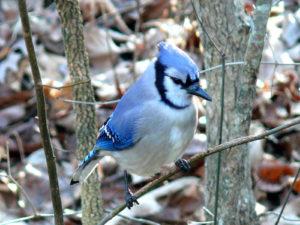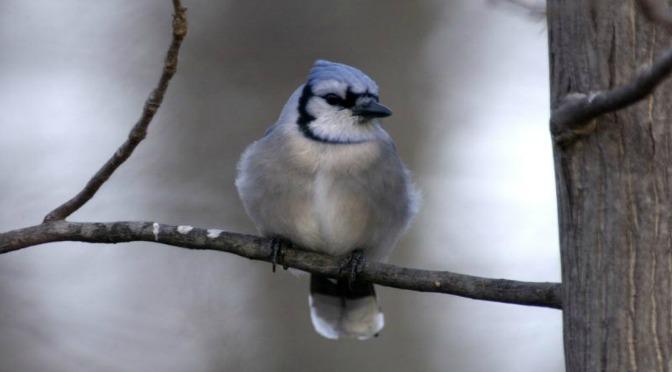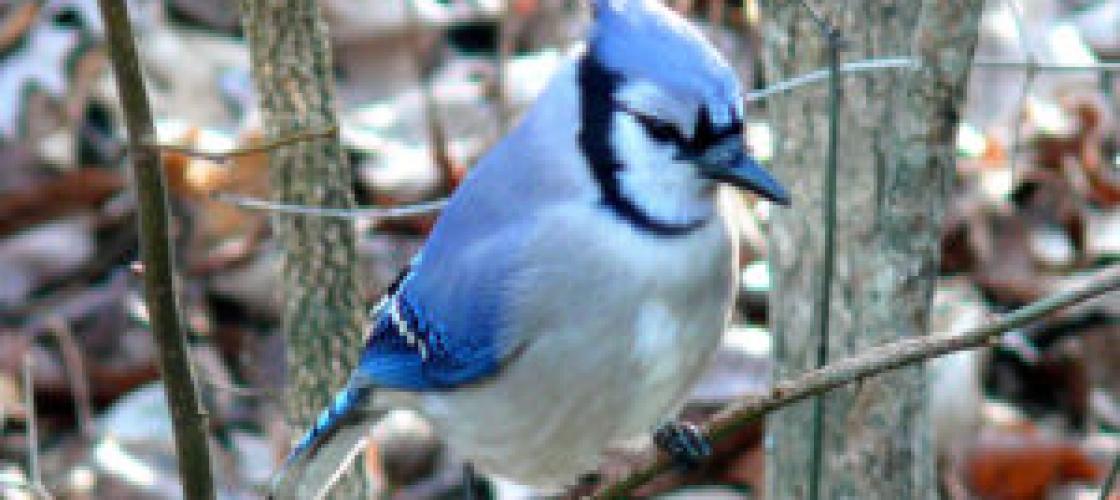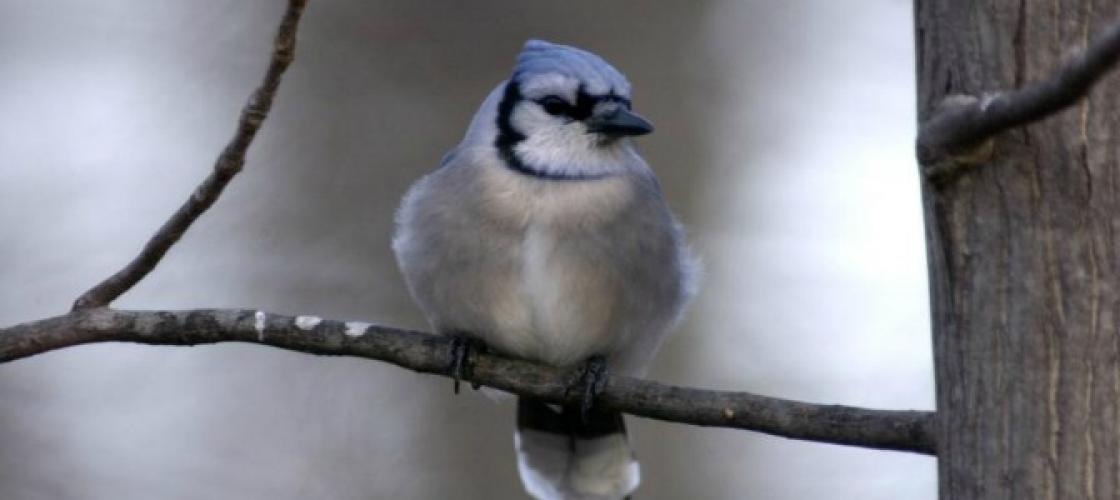For many of us, the flashy, bold blue jay was the first bird we learned to identify. Jays are conspicuous because of their size and striking color. White patches and black bars highlight the bird's blue wings and tail, and it has white underparts and a black necklace on its front. A jay also sports a distinct crest.
Jays belong to a family of birds that includes magpies and crows. All of these birds are aggressive, a trait that might strike people as unappealing when they watch blue jays bullying smaller birds around feeders.
Blue jays act as danger alarms of the forest, and greet intruders with a piercing "jay, jay, jay" or "thief, thief, thief." People, owls, hawks, snakes and other potential predators prompt this reception. Jays' voices are harsh, but their calls are a varied repertoire that includes what sounds like a very good impression of a squeaky pump handle.
The bird's powerful, all-purpose bill efficiently handles a wide range of food, but they prefer acorns. Blue jays will bury several to eat later. Some acorns are never recovered, giving them a good start on becoming oak trees.
The Anatomy of a Blue Jay
- Blue jays are relatively large songbirds (about the size of a robin) with blue upperparts and whitish underparts.
- A blue crest on the head can be raised or lowered depending on the bird’s mood.
- The blue jay's back is rather lavender, and the wings and tail are sky blue with black bars and white highlights.
- Its strong bill and feet are black; the face is white and is nearly surrounded by a black collar.
- The blue jay's voice varies from soft murmurs to loud screams to clear, chime-like whistles.
Learn more about blue jays with MDC's Field Guide.




Recent Posts
























